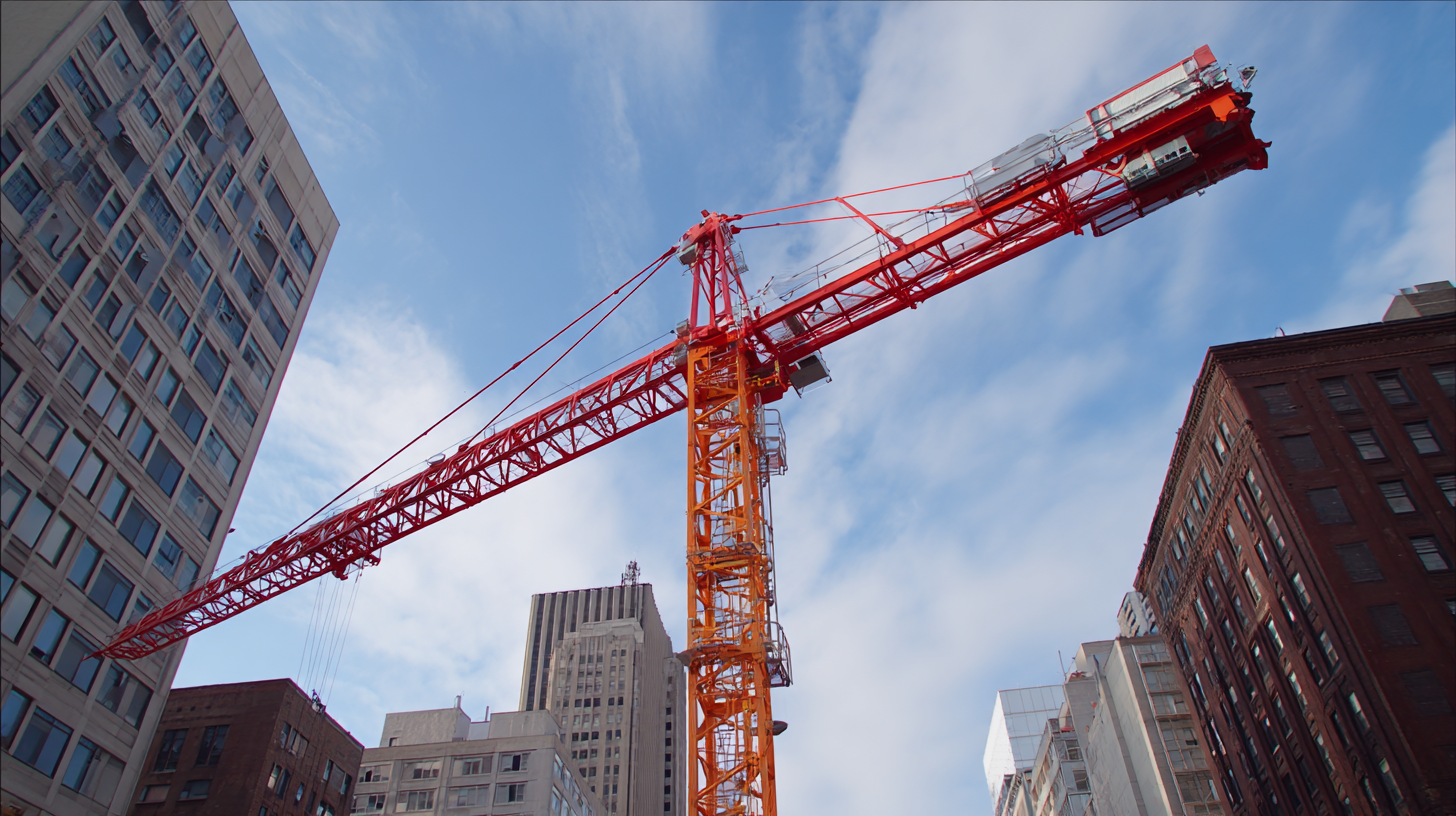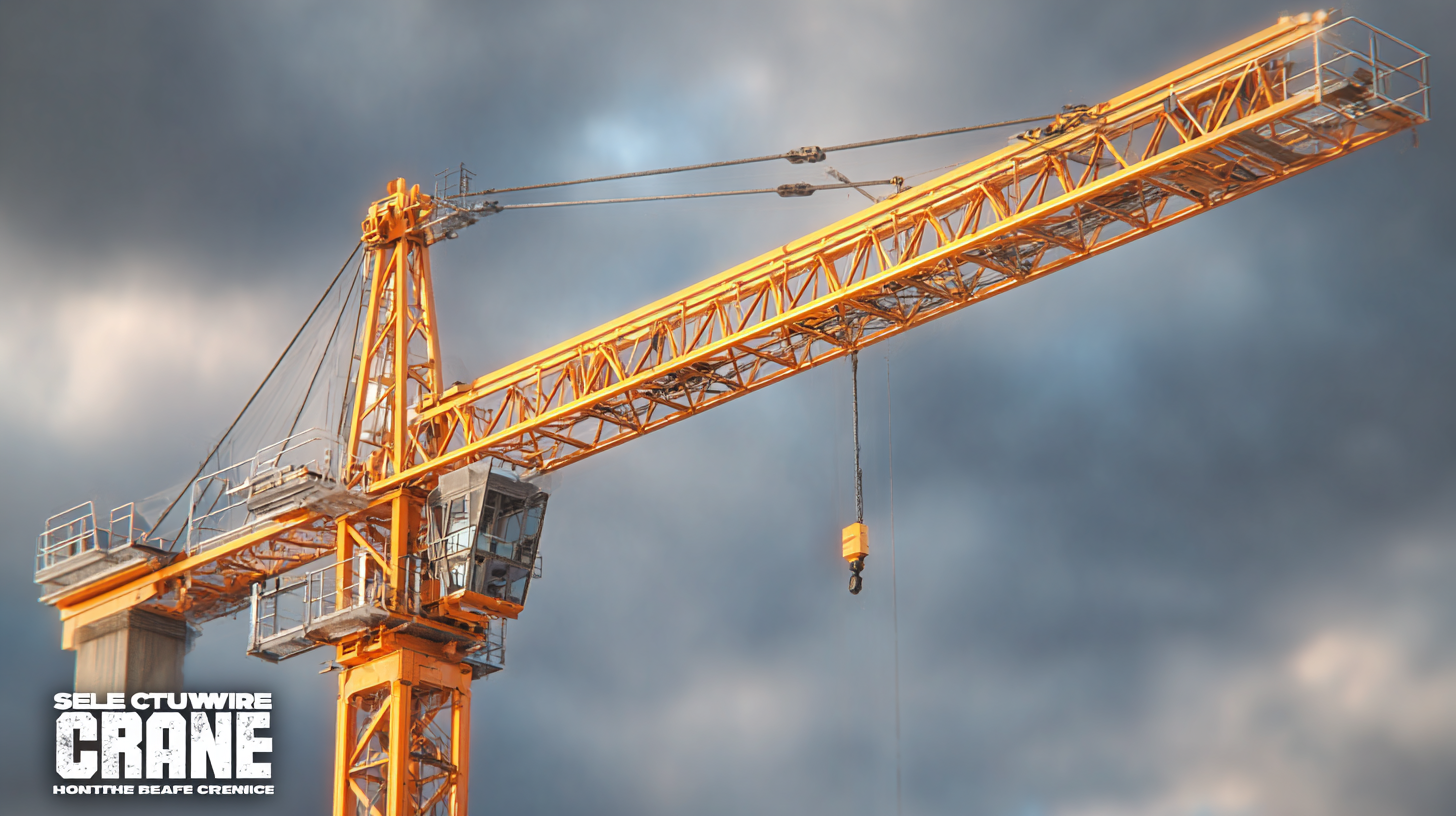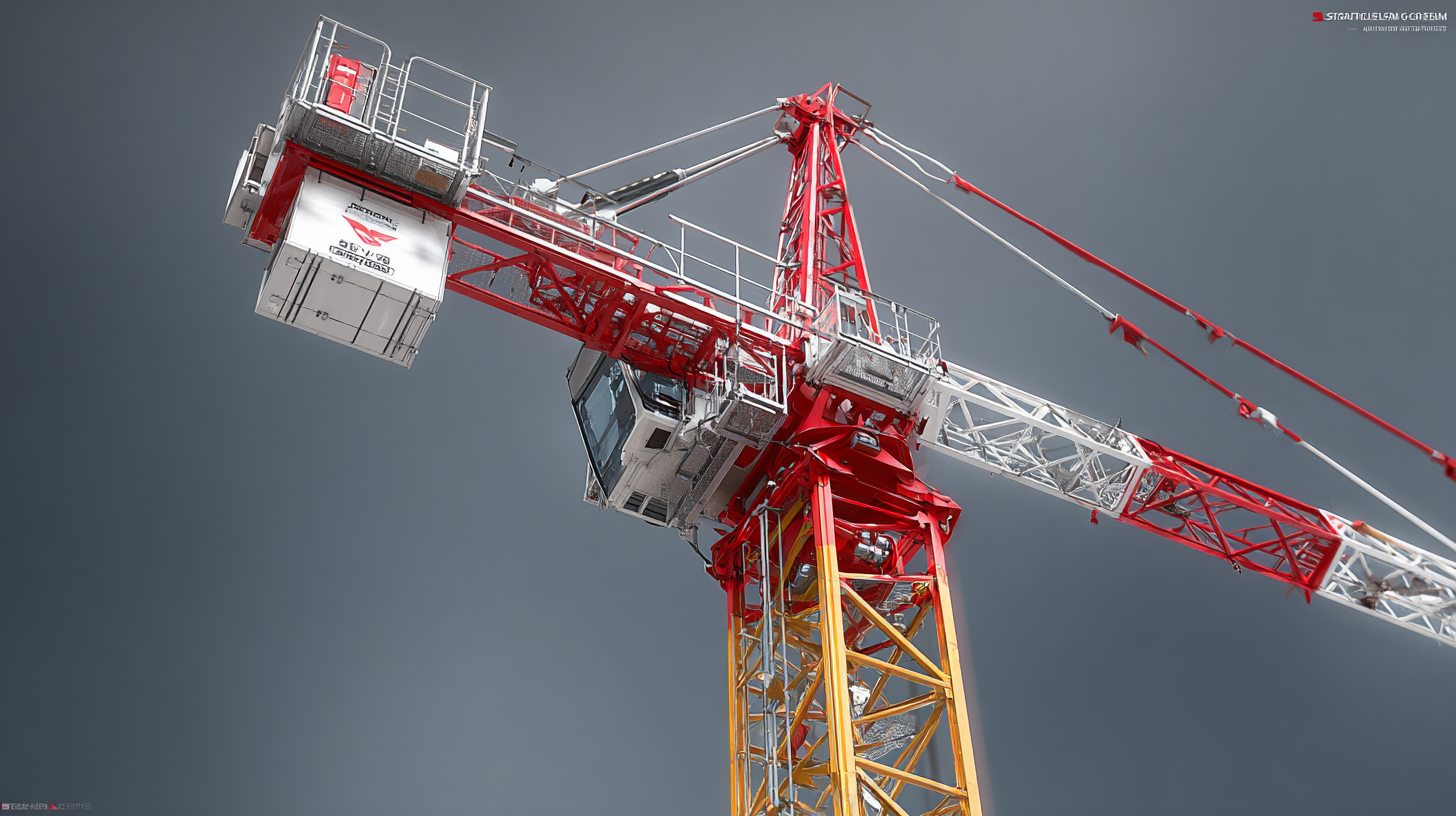In the booming construction industry, selecting the right equipment is crucial for project efficiency and safety. Among the essential machinery, the Self Erecting Tower Crane stands out as a versatile and effective solution for various construction needs. According to the Global Tower Crane Market report by Research and Markets, the tower crane segment is anticipated to grow significantly, with self-erecting tower cranes gaining popularity due to their ease of use and reduced labor costs. These cranes are particularly beneficial for smaller sites where space is limited, offering remarkable lifting capacity and operational flexibility. Understanding the different types of self erecting tower cranes, along with their benefits and limitations, is essential for construction professionals aiming to maximize productivity and ensure project success.

When selecting a self erecting tower crane for your construction projects, several key factors should be considered to ensure you choose the right equipment for your needs. First and foremost, assess the type of construction site and the specific tasks the crane will be performing. Different models, such as hammerhead, flat top, and luffing jib cranes, offer distinct advantages depending on the project requirements. For instance, if your site is constrained, a luffing jib crane might be more suitable due to its ability to operate in tight spaces.

Another crucial factor is the crane's lifting capacity and height. Evaluate the maximum load weight and the height at which materials will need to be lifted. This will help you determine if a particular self erecting tower crane can handle the demands of your project. Additionally, consider the crane's setup and dismantling time, as efficiency in these areas can significantly impact project timelines and costs. Lastly, do not overlook the regulatory compliance and safety features of the crane, ensuring that it meets local standards and provides a safe working environment for your team.
 When selecting the best self-erecting tower crane for your construction projects, it's crucial to focus on key features that enhance efficiency and safety. First and foremost, consider the crane's lifting capacity, which must align with your project requirements. An adequate lifting capacity ensures that the crane can handle the loads necessary for your specific construction tasks without compromising stability.
When selecting the best self-erecting tower crane for your construction projects, it's crucial to focus on key features that enhance efficiency and safety. First and foremost, consider the crane's lifting capacity, which must align with your project requirements. An adequate lifting capacity ensures that the crane can handle the loads necessary for your specific construction tasks without compromising stability.
Another essential feature is the crane's height and reach. A self-erecting tower crane with an optimal height can significantly reduce the number of cranes needed on-site, saving both time and money. Additionally, look for models that offer enhanced maneuverability; features like a variable jib length allow for versatile operation, enabling you to position materials precisely where they are needed.
Lastly, pay attention to the safety features integrated into the crane design. Advanced safety systems, such as load moment indicators and anti-collision technology, are invaluable for protecting workers and equipment on site. Investing in a tower crane with robust safety measures ensures compliance with regulations and fosters a secure working environment. Choosing a crane with these key features will lead to a successful and safer construction project.
When selecting a self erecting tower crane for construction projects, prioritizing safety standards is essential. The first critical safety standard to consider is compliance with the Occupational Safety and Health Administration (OSHA) regulations. These guidelines ensure that cranes are designed, maintained, and operated in a manner that minimizes risk to workers. Ensuring your crane meets these regulations not only fosters a safer work environment but also protects your project from potential legal liabilities.
Another vital safety standard is the adherence to the European Norm (EN) standards if you’re operating in Europe or regions influenced by these regulations. These standards specify performance criteria and safety measures for cranes, focusing on aspects like structural integrity and operational safety. Compliance with EN standards guarantees that the crane can handle heavy loads and extreme conditions, which is paramount for the safety of construction activities.
Lastly, implementing regular inspection and maintenance protocols is fundamental. This aligns with the American National Standards Institute (ANSI) guidelines, which advocate for routine checks to identify wear and potential failure points. By following these safety standards, construction companies can enhance operational reliability and protect the welfare of their workforce, making informed decisions when choosing the right self erecting tower crane.
When it comes to selecting the right crane for your construction project, self erecting tower cranes stand out as a superior option compared to traditional cranes. One of the primary advantages is their compact design, which allows for easy transport and setup in confined spaces. Unlike traditional cranes that require extensive groundwork and longer assembly times, self erecting models can be operational within hours, ensuring that your project stays on schedule.
Another key reason to opt for a self erecting tower crane is their enhanced safety features. With automated mechanisms and advanced controls, these cranes reduce the risk of accidents during setup and operation. This is particularly valuable in busy urban environments where safety is paramount. Additionally, self erecting cranes typically offer better lifting capacity and height, making them ideal for taller buildings. Their ability to operate efficiently in a variety of conditions further underscores their advantages over traditional crane solutions, making them a smart investment for construction managers looking to streamline operations.
When selecting a self-erecting tower crane for your construction project, evaluating cost-effectiveness is crucial. According to a report by the International Trade Administration, the initial investment in construction equipment can account for up to 30% of a project's total cost. Thus, understanding the long-term savings and operational efficiency of self-erecting tower cranes can significantly impact your bottom line. These cranes offer reduced labor costs, as they require fewer operators and minimal setup time, which typically leads to faster project completion.
Additionally, a study from the Construction Industry Institute highlights that construction sites utilizing self-erecting tower cranes can achieve up to a 20% increase in productivity. This boost can be attributed to their ability to operate in confined spaces and their flexibility in handling various load capacities. By assessing the operational costs, maintenance requirements, and potential uptime, project managers can accurately calculate the return on investment (ROI) for acquiring a self-erecting tower crane. This informed decision-making process not only ensures a suitable choice for your site but also aligns with budgetary constraints and project timelines.
| Model | Max Load Capacity (tons) | Height (m) | Reach (m) | Cost ($) (Approx.) | Cost-Effectiveness Rating (1-5) |
|---|---|---|---|---|---|
| Model A | 8 | 30 | 40 | 50,000 | 4 |
| Model B | 10 | 32 | 45 | 70,000 | 3 |
| Model C | 12 | 35 | 50 | 80,000 | 5 |
| Model D | 15 | 40 | 60 | 100,000 | 4 |
